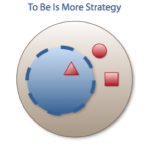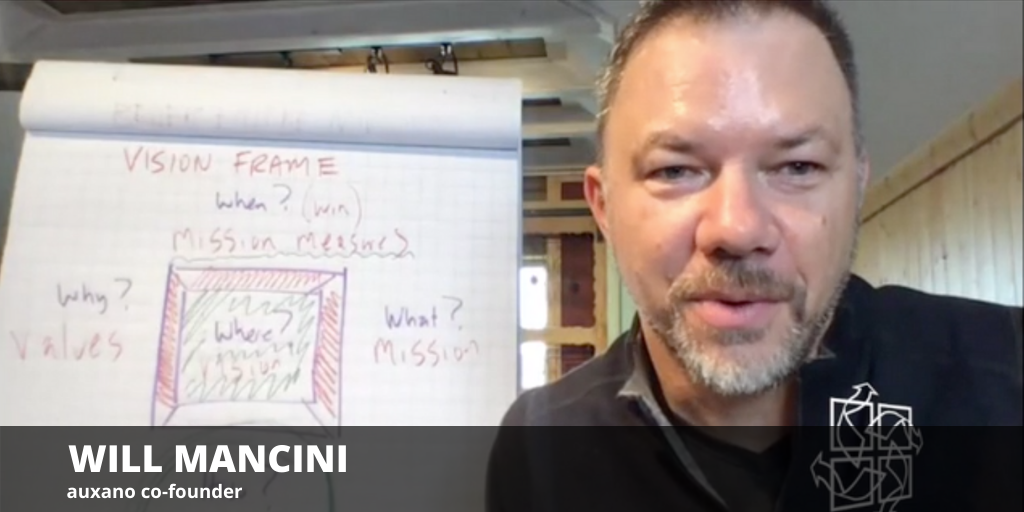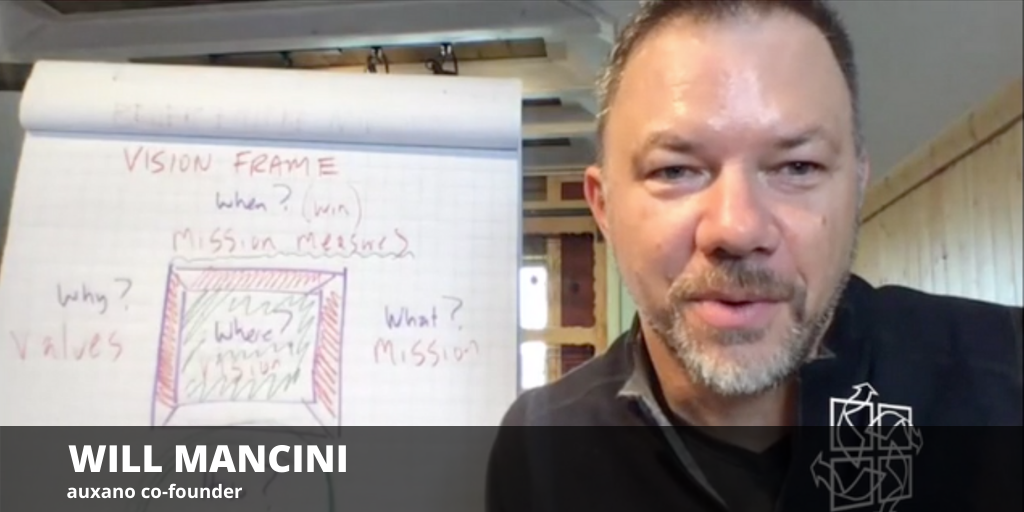Looking back, 2016 was truly a landmark year. From Olympics to Elections to Chewbacca Mom, the year contained moments worth sharing and remembering. The year contained new beginnings, new opportunities and the potential for new ministry impact.
Maybe 2016 was also supposed to be the year that you finally implemented a discipleship strategy, but there never seemed to be enough time, the right team or an applicable model. In this, the last issue of SUMS Remix for 2016, the Auxano team wants to help you jumpstart the implementation of an intentional discipleship strategy for 2017. We are proud to feature disciple-making strategy solutions from three foundational books of the Auxano Vision Framing process.
There is no time like right now to develop a discipleship strategy that engages hearts and inspires growing faith every day. Do not let 2017 slip away. Start building the disciples of tomorrow, today.
THE QUICK SUMMARY – Innovating Discipleship, by Will Mancini
Everyone is talking about discipleship, but too many churches stick to business as usual. Sunday comes and Sunday goes. The preacher preaches, the band worships, money gets put in the plate and people get back to their busy, unaffected lives. Hasn’t God called us to more?
Will Mancini thinks so, and that’s what Innovating Discipleship is all about. Innovating Discipleship is for church leaders who have growing discontent for “best practicing” and “fast following.” Is God calling you to re-dream and re-invent beyond the ministry models that were handed to you?
In this potent book, Mancini uncovers the primary obstacle in the minds of pastors that keeps discipleship stuck – revealed through thousands of hours of coaching with church leaders. He calls it the “default vision switch.”
More importantly, Innovating Discipleship gives you a simple and powerful tool to guide you, step by step, into the freedom and confidence of real discipleship, for your time and your place. In the end, there are only four paths to getting the results you have always wanted. Which path will be right for you?
A SIMPLE SOLUTION
One of the greatest challenges in helping church leaders through a vision process is quickly getting them to agree on “what is,” “what could be,” and then “what should be.” How do you start? How do you bring all of these very different perspectives together?
There are three approaches to church strategy:
- More is more
- Less is more
- To be is more
Let’s ask three simple questions to identify what kind of approach represents your church.
1) Rhythm question: How many weekly engagements do we expect of people?
2) Purpose question: What are the purposes of the weekly engagements and how do they relate?
3) Environments question: Do these engagements take place in “church space” or “life space” or both?
Please don’t underestimate the simplicity and power of these questions. How a church answers these questions reveals an “operational logic” and an underlying belief system about the nature of the church.
Here is a brief description and simple diagram for these approaches.
MORE IS MORE
 A “more is more” approach is seen in a church in which the basic operating assumption is that the more programs a church can offer in the “church space” the better. The hope is that more programs will attract more people and provide opportunities for spiritual growth.
A “more is more” approach is seen in a church in which the basic operating assumption is that the more programs a church can offer in the “church space” the better. The hope is that more programs will attract more people and provide opportunities for spiritual growth.
LESS IS MORE
 The “less is more” approach operates with the assumption that the church should provide a few high quality offerings. Whether or not these offerings take place in church space or life space is a variable. In addition, the church attempts to design these offerings so that they have a meaningful relationship to one another. Ideally, the program offerings are designed around a unified set of output (discipleship) results.
The “less is more” approach operates with the assumption that the church should provide a few high quality offerings. Whether or not these offerings take place in church space or life space is a variable. In addition, the church attempts to design these offerings so that they have a meaningful relationship to one another. Ideally, the program offerings are designed around a unified set of output (discipleship) results.
 TO BE IS MORE
TO BE IS MORE
The “to be is more” approach operates with the assumption that the church should provide as little as needed in terms of weekly offerings in order to maximize output (discipleship) results in “life space.” With a greater focus on “life space,” each engagement is forced to have great clarity of purpose, and output (discipleship) results necessarily play a greater role in the church’s identity. This strategy requires a stronger presence of leadership and tool development.
Spiritual formation doesn’t happen in a program at the church. It happens by living your life. We really need to stay away from creating programs as our goal. Programs have their place, but they must be subordinated to the spiritual life.
– Dallas Willard
Think of your church’s ministry model as a pattern of “engagements” that are designed to produce certain outcomes. Engagements include any array of activities you offer from worship to mission trips. They are what you promote each week in your worship guide and everyday on your website. They include all of groups, classes, events, and initiatives that a church can offer. They include programs at church or anywhere away from the church, like a home-based life group or a community-based service initiative. If it’s a place I can go or something I can do in the name of your church, it’s an engagement.
Will Mancini, Innovating Discipleship
A NEXT STEP
Diagnosis – As you scan these three pictures above, which approach describes your church’s current strategy? Draw the diagram for your leadership team. Be sure to include all the various ministries you church currently offers.
Results – Looking at these three approaches to church strategy can help make connections between our ministry models and the results they are designed to produce. If you are unsatisfied with your current discipleship results, it is time to change your model.
Decision – Now you can better answer the question “Is it better to use our existing ministry model or to introduce a change?” What change would you introduce?
Every model of ministry today can be summarized by three different approaches; these approaches create a useful portal for discussing ministry model design for better results.
As you consider changing your current strategy or creating a new one, keep the following essential practices in mind.
Clarity: Innovation must be anchored in clarity first. Clarity isn’t everything but it changes everything. Clarity is the least understood innovation essential among church leaders.
Margin: If you don’t stop doing something, you’ll never start doing something better. Margin is essential. It’s the most neglected innovation essential to church staffs.
Heart: All innovation is a solution to a prior problem and people won’t care about your innovation until they emotionally connected to the problem. Heart is the most underappreciated essential for ministry leaders.
Team: Time and time again, the best ideas come from the collaborative engine of a team. For church leaders, leaning into team is the most inconvenient innovation essential.
Excerpted from SUMS Remix #56, December 2016
This is part of a weekly series posting content from one of the most innovative content sources in the church world: SUMS Remix Book Summaries for church leaders. SUMS Remix takes a practical problem in the church and looks at it with three solutions; and each solution is taken from a different book. As a church leader you get to scan relevant books based on practical tools and solutions to real ministry problems, not just by the cover of the book. Each post will have the edition number which shows the year and what number it is in the overall sequence. (SUMS provides 26 issues per year, delivered every other week to your inbox).
> Subscribe to SUMS Remix <<

Tags: Innovating Discipleship, Will Mancini
|
What is MyVisionRoom? > | Back to Discipleship >



















 A “more is more” approach is seen in a church in which the basic operating assumption is that the more programs a church can offer in the “church space” the better. The hope is that more programs will attract more people and provide opportunities for spiritual growth.
A “more is more” approach is seen in a church in which the basic operating assumption is that the more programs a church can offer in the “church space” the better. The hope is that more programs will attract more people and provide opportunities for spiritual growth. The “less is more” approach operates with the assumption that the church should provide a few high quality offerings. Whether or not these offerings take place in church space or life space is a variable. In addition, the church attempts to design these offerings so that they have a meaningful relationship to one another. Ideally, the program offerings are designed around a unified set of output (discipleship) results.
The “less is more” approach operates with the assumption that the church should provide a few high quality offerings. Whether or not these offerings take place in church space or life space is a variable. In addition, the church attempts to design these offerings so that they have a meaningful relationship to one another. Ideally, the program offerings are designed around a unified set of output (discipleship) results. TO BE IS MORE
TO BE IS MORE